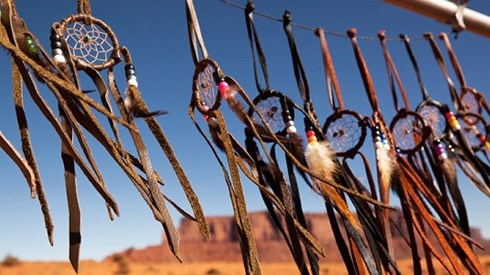AMERIND: A Cell Captive in Operation

July 01, 2019

Back in May, we wrote an article, "Key Accounting Issues for Cell Captives," based on a white paper by Johnson Lambert and Spring Consulting Group. At the end of the story, we mentioned that there would be a follow-up article about an actual cell captive in use. This piece concerns Amerind Risk Management Company (AMERIND), a Native American-owned and -operated public entity risk pool, which employs a cell captive to underwrite different lines of business. (Full disclosure: the writer serves as a consultant to Amerind, serving on their Cell Advisory Commission). We thought readers would enjoy seeing how a cell captive operates in reality and how Amerind has chosen to segregate its business lines using cells.
For those looking to understand what a cell captive is, we recommend the following definition. The IRMI Glossary of Insurance and Risk Management Terms defines "cell captive" as follows: "A sponsored captive or rent-a-captive, which maintains underwriting accounts separately for each participant. May be called protected cell captive (PCC) or segregated cell insurer. If the cells are legally segregated, it may be used to securitize risk."
A brief history of AMERIND is in order. AMERIND is a public entity risk pool designed to underwrite and provide insurance for tribal governments, tribal housing authorities, tribal businesses, and individual home owners located in Indian country. Initially formed in response to the lack of affordable property-casualty insurance options available to publicly funded low-income tribal housing, AMERIND was incorporated in 1986 by the Red Lake Band of Chippewa Indians.
In 2006, through three sponsoring tribes (Red Lake Band of Chippewa Indians, Confederated Salish and Kootenai Tribes of the Flathead Reservation, and the Pueblo of Santa Ana), AMERIND became a federally chartered Section 17 corporation under the 1934 Indian Reorganization Act. These chartering tribes delivered the management of the corporation to its members, which include tribal-designated housing entities, tribal housing authorities, and the tribes themselves. AMERIND is currently the market of choice for Native American home owners and renters, and the company is making significant gains in writing tribal governments and businesses and tribal workers compensation through its cell structure. AMERIND currently provides insurance products to over 430 participating member tribes and is well positioned for profitable growth.
Beginning in 2008, the senior management team at AMERIND began to consider creating a cell captive in order to expand its insurance offerings while at the same time protecting the assets of the original tribal housing authorities that contributed capital to start its operations. In January 2009, the AMERIND Board adopted and approved a cell regulation policy outlining how cells were to be formed, administered, and reviewed. The Board approved the creation of a Cell Advisory Commission for the purpose of providing feedback, monitoring, and compliance review concerning the creation and operations of cells.
Concurrently, the Board approved the creation of three cells.
- The Indian Housing Risk Retention Pool (Risk Pool) is a public entity risk pool. Through the board's action, it became the Indian Housing Block Grant (IHBG) cell, as funding is provided to the various risk pool members from the US Department of Housing and Urban Development through this grant. The grant and authorization of the risk pool is enabled by the Native American Housing Assistance and Self-Determination Act (NAHASDA) of 1996.The IHBG cell continues to be a risk pool, and membership is limited to the housing authorities or tribally designated housing entities of federally recognized Indian tribes receiving NAHASDA funding.1
- The Native American Homeowners and Renters (NAHR) cell provides property and casualty insurance to individual tribal members who either own or rent their houses in Indian country. Tribal members who move out of public housing into their own homes are not eligible to buy insurance under the IHGB program. Hence, a separate cell was created to provide coverage to these individuals.The cell provides insurance similar in nature to homeowners insurance issued by a traditional property and casualty company such as State Farm.
- The Tribal Workers Compensation (TWC) cell was formed in order to provide insurance coverage to employees for work-related injuries. The cell plan is an alternative to traditional workers compensation programs offered by the insurance industry. Similar in nature to traditional workers compensation, the cell provides coverage for medical costs, loss of body parts, disability, and death of an injured employee.
The cells allowed AMERIND to segregate the risks associated from each of these lines of business from the other two, while at the same time allowing the corporation to diversify its risk profile and spread its administrative costs across the three cells.
Since the creation of the three cells in 2009, AMERIND has continued to expand, adding two additional cells to its business structure.
- The Tribal Government and Business (TGB) cell was created to provide property and liability protection to tribal governments, tribal enterprises, tribally managed housing not funded under NAHASDA, and other business enterprises operated strictly on reservation lands.
- AMERIND Re cell was the newest cell created in 2015 to allow the other four cells to cede premiums and losses, thereby reducing the cost of reinsurance for the overall corporation and providing additional protection to each of the other cells. Beginning in 2018, AMERIND Re was used to begin providing fleet automotive coverage on state-admitted paper through a fronted program utilizing a quota-share reinsurance agreement.
All five cells are monitored on a continuous basis and have performed to date as intended. It is highly likely AMERIND will continue to explore other cell opportunities to enhance and expand the insurance coverages it offers to Native Americans.
- NAHASDA.
July 01, 2019



